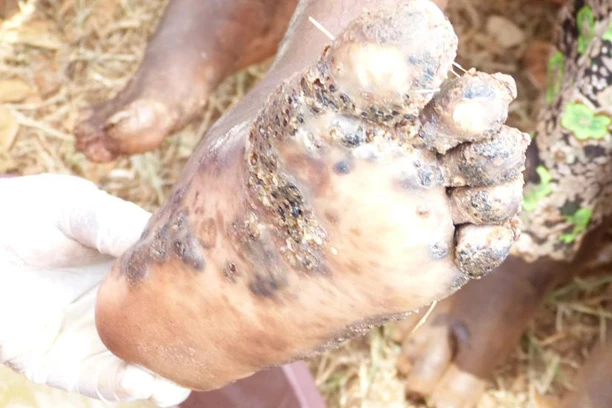The parasite flea Tungapenetrans and other species that are related are what cause tungiasis skin condition (jigger). The flea is also known as the “sand flea,” “chigoe,” “jigger,” and “pique,” to mention just a few alternate names.
Due to the flea’s limited ability to jump, the feet of the host are the most frequent site for an epidemic of the illness. If these locations have been close to the ground, it can also grow in the insoles of the feet, under the toenails, and elsewhere on the body. White skin patches with a black dot in the middle can be a symptom of tungiasis skin condition (jigger). The patient may feel discomfort, itchiness, and irritation.
Occasionally, if a severe case is not recognised and treated appropriately, individuals may experience superinfections of the disease. Other infections like tetanus and Clostridium might also result in problems.
In which countries is tungiasis skin condition (Jigger) endemic?
Originating in the Caribbean, West Indies, and Central America region, the flea has since moved to other hot spots. These days, it can be found in Pakistan, South America, India, and Africa. When sand was transported from Brazil to Angola in the late 19th century, it is thought to have spread there. The flea travels along trade routes that were popular at the time as it spreads around the planet.
Although it has been reported to exist in rainforest zones and banana plantations with laterite soil, the illness appears to be most prevalent in areas with a lot of sand. It is currently widespread in 88 different nations globally. Brazil, Madagascar, and Nigeria have been some of the most recent destinations.
Researchers have looked at the condition’s prevalence across various regions. Tanzanian researchers observed two villages in 2012 to gauge the prevalence of the illness there. The study comprised 586 participants who were five years of age or older. The researchers discovered that 249 individuals, or about 42.5%, had tungiasis diagnoses. In this instance, the condition was most prevalent in people over the age of 45.
No race is more vulnerable to the flea than another. However, locals are typically more impacted than tourists in a given area.
How do humans become infected?
The flea needs a warm-blooded host to feed on and reproduce. This implies that it not only bites people but also parasitizes and bites other animals such as pigs, dogs, cats, and cattle. Only female fleas can cause skin sores; male fleas are unable to feed on humans.
To lay her eggs, the female flea digs into the host’s epidermis. While the flea’s abdomen is at the skin’s outer layer, where it can cause a punctum or ulcer, the flea’s head is embedded deep into the epidermis to feed on the host’s blood supply.
Through this open space, the flea can also breathe. The flea’s abdomen changes into a sac, which is where the eggs are later dropped. These will eventually separate. The eggs proceed through all of the phases of larval and pupal development after they have left the host. The female flea will perish inside the skin.


2 Comments
Pingback: Tungiasis Skin Condition (Jigger) – Sujata Birla Hospital
Raju
Great post.